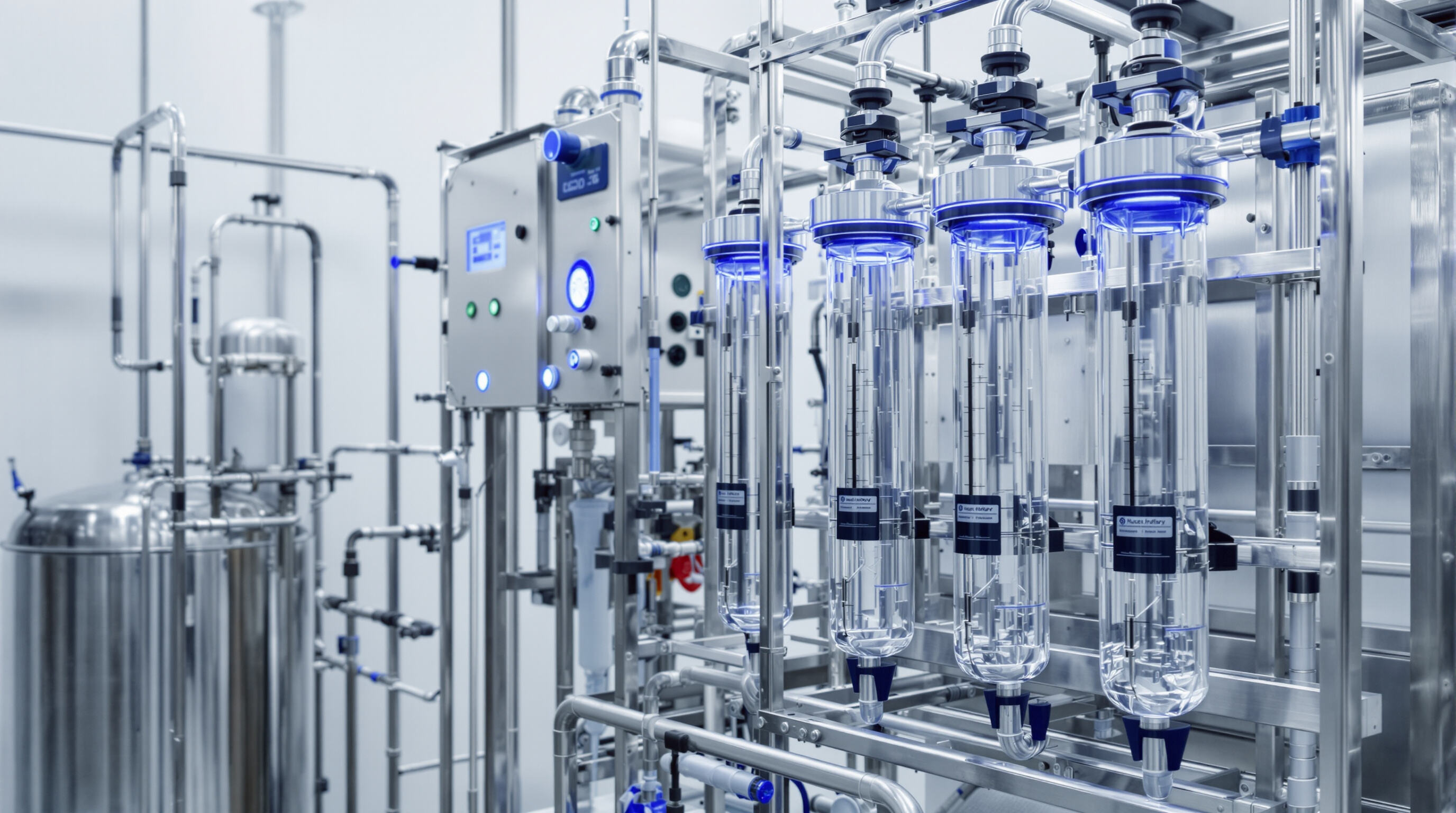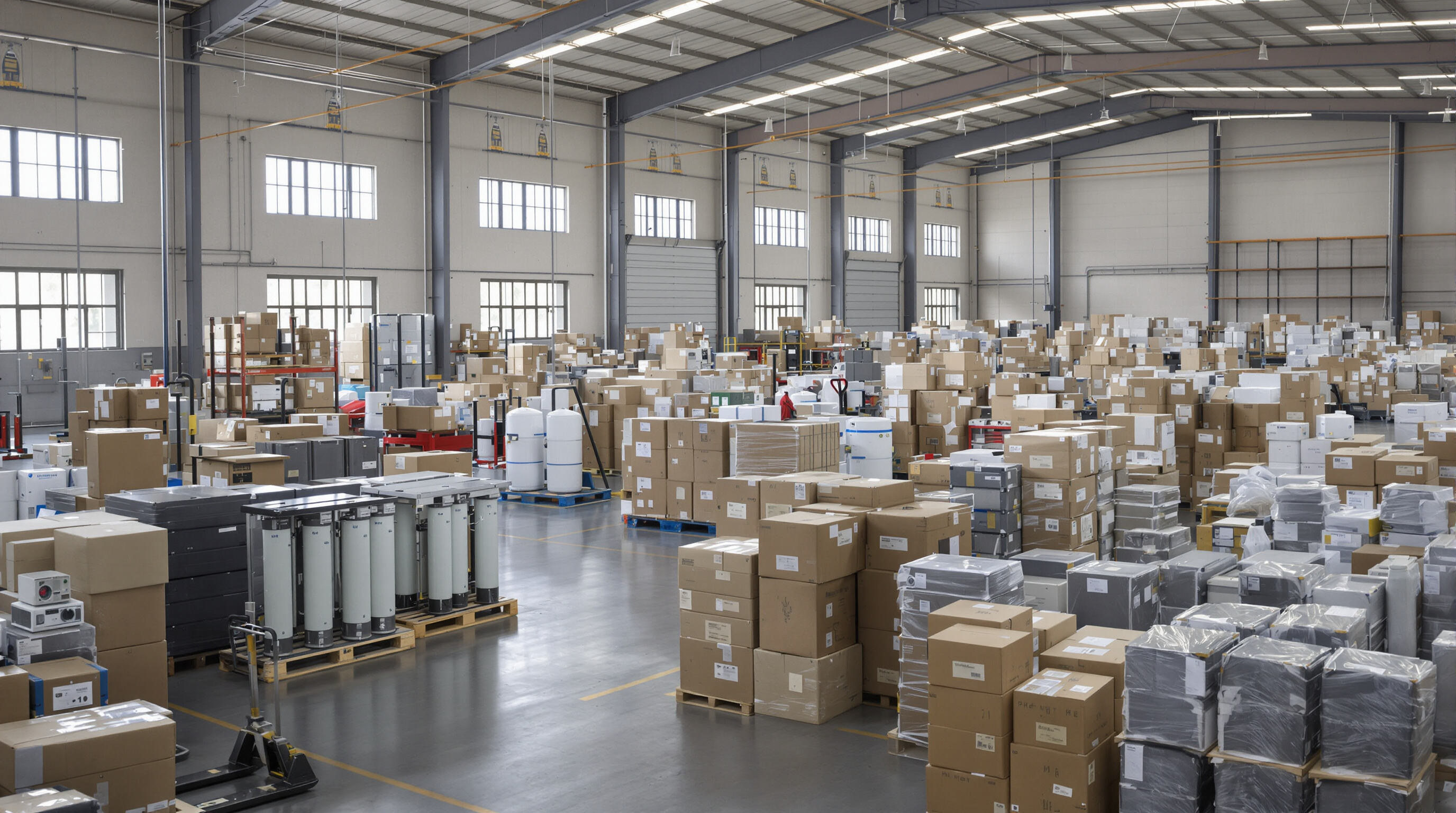Advantages of Sourcing Wholesale Pharmaceutical Purified Water Systems
The Essential Role of Pharmaceutical Purified Water in Manufacturing Quality
Ensuring product integrity with reliable pharmaceutical purified water systems
The quality of drugs depends heavily on pharmaceutical purified water systems since they remove all sorts of contaminants that would otherwise ruin product quality. According to a recent study published in 2024, around 6 out of 10 API manufacturers saw better batch consistency once they upgraded their water purification setup. These systems stop nasty stuff like endotoxins, microbes growing wild, and those pesky ionic impurities from getting into the production process. The Pharma Water Council estimates this actually saves companies about $2.3 billion every year by avoiding defects caused by poor water quality. Top tier facilities have started implementing real time conductivity checks along with automatic cleaning cycles that go beyond what the USP <643> guidelines require for non sterile products. This extra attention to detail makes sense when considering how much money gets lost annually due to water issues in manufacturing.
Key applications in formulation, lab testing, and biotechnology
Pharmaceutical purified water is essential across multiple high-precision applications:
- Liquid formulations: Ensures solubility and stability in parenteral drugs and oral suspensions
- Quality control labs: Provides interference-free media for HPLC and spectrophotometry
- Bioreactors: Maintains sterile conditions for monoclonal antibody production
According to the 2024 Pharmaceutical Water Quality Report, 97% of biologics producers require endotoxin levels below 0.05 EU/mL–five times stricter than FDA minimums for injectables.
Meeting stringent demands for water for injection and HPLC-grade water
| Water Type | Key Specifications | Critical Applications |
|---|---|---|
| WFI (Water for Injection) | Sterile, <0.25 EU/mL endotoxins | IV solutions, vaccines |
| HPLC-Grade | <0.1 µS/cm conductivity, TOC <50 ppb | Chromatography mobile phases |
| Purified Water | <500 µS/cm conductivity, <100 CFU/mL | Equipment cleaning, tablet coating |
Modern systems integrate reverse osmosis with continuous electrodeionization to simultaneously meet USP and EP requirements for all three water grades, reducing validation costs by 18% compared to legacy multi-unit setups (ISPE Water Systems Benchmark 2023).
Compliance with Global Regulatory Standards for Pharmaceutical-Grade Water
USP, EP, and FDA Requirements for Pharmaceutical Purified Water Quality
Water used in pharmaceutical manufacturing needs to hit pretty high standards according to international guidelines. For non-sterile products, USP sets limits at less than 100 colony forming units per milliliter and conductivity readings below 500 microsiemens per centimeter. Things get even stricter in Europe where pharmacopoeia rules demand endotoxin levels under 0.25 EU/mL for injectable medications plus extra checks on nitrate content and presence of heavy metals. Over here in the US, the FDA wants ongoing surveillance of total organic carbon and microbial growth throughout production processes to stop any potential contamination issues. Getting all these different regulations aligned helps manufacturers maintain quality control whether they're operating in North America, Europe or anywhere else with strict drug manufacturing requirements.
| Region | Microbial Limit (CFU/mL) | Endotoxin Limit (EU/mL) | Key Monitoring Parameters |
|---|---|---|---|
| USP | ≤100 | Not Specified | Conductivity, TOC, Microbial Load |
| EP | ≤10 | <0.25 | Endotoxins, Nitrates, Heavy Metals |
| FDA | Process-Specific | Process-Specific | TOC, Microbial Retention Testing |
Harmonization Challenges and Regional Regulatory Variations
Different regions create headaches for companies operating worldwide. The Japanese Pharmacopoeia sets much tighter restrictions on inorganic impurities compared to USP standards, so extra filtration steps become necessary. The World Health Organization does suggest standard endotoxin levels across the board, though how these rules get enforced really depends on location. In many parts of Asia Pacific, budget friendly approaches tend to win out against highly accurate testing methods. Looking at recent data from a compliance report released last year, about two thirds of biotech companies reported running into problems when trying to meet both EU and FDA requirements at once. All these inconsistencies point towards why flexible purification setups are becoming increasingly important. Manufacturers need systems that can adapt to local regulations while still maintaining good performance overall.
Advanced Purification Technologies Ensuring Consistent Water Purity

Reliable pharmaceutical purified water systems use layered purification processes to eliminate contaminants at every stage while supporting scalable production.
Reverse osmosis, ultrafiltration, and UV/ozone sanitization: Core purification methods
Modern systems rely on three core technologies to achieve pharmacopeia-grade purity:
- Reverse Osmosis (RO): Removes over 99% of dissolved solids, endotoxins, and microorganisms via semi-permeable membranes
- Ultrafiltration (UF): Filters colloids, bacteria, and viruses using membranes with 0.01–0.1 micron pores
- UV/Ozone Integration: Delivers chemical-free sanitization by disrupting microbial DNA and oxidizing organic residues
| Process | Target Contaminants | Critical Control Parameters |
|---|---|---|
| RO | Ions, endotoxins, microorganisms | TOC ≤500 ppb, conductivity |
| UF | Colloids, bacteria (>20nm) | Transmembrane pressure, flux rate |
| UV/Ozone | Microbial regrowth, biofilm | UV intensity, ozone residual |
Multi-stage filtration design for contamination prevention and scalability
Advanced systems employ a staged approach–pretreatment, primary purification, and polishing–to isolate contaminants and enable seamless capacity expansion:
- Multimedia filters remove sediments and chlorine to protect downstream components
- RO/UF modules form the primary purification barrier with automated integrity testing
- Final UV/ozone polishing ensures sustained microbial control before dispensing
This modular architecture supports scale-up during commercialization by allowing parallel treatment trains to be added without process interruption. Redundant design also maintains operational continuity during maintenance, ensuring reliability from lab-scale to full production environments.
Wholesale Sourcing Benefits: Cost Efficiency and Supply Chain Reliability

Reducing operational costs through bulk procurement of pharmaceutical purified water systems
Bulk purchasing of purified water systems reduces capital and operational expenses through volume-based pricing. Industry data shows wholesale contracts lower capital expenditure by 18–25% compared to retail procurement (Pharma Manufacturing Quarterly, 2023). Key savings include:
| Cost Factor | Standard Procurement | Wholesale Procurement | Reduction |
|---|---|---|---|
| Per-unit equipment costs | $42,000 | $32,000 | 24% |
| Annual maintenance fees | $7,400 | $5,500 | 26% |
| Installation services | $16,000 | $13,200 | 18% |
| System validation | $9,800 | $7,350 | 25% |
These savings free capital for facility upgrades while ensuring uninterrupted USP-compliant water production. Strategic inventory management through wholesale channels also avoids rush-order premiums, which can inflate component costs by 30–40%.
Strengthening supply chain resilience in growing pharmaceutical water markets
Wholesale partnerships build buffer inventories that prevent production stoppages during supply disruptions. With demand for pharmaceutical water equipment projected to grow 9.2% annually through 2028 (Global Water Intelligence), bulk agreements address three major risks:
- Lead time reduction: Consolidated logistics shorten delivery times from 12–16 weeks to 6–8 weeks
- Component security: Guaranteed access to certified membranes, UV lamps, and sensors during shortages
- Disruption buffers: 45% higher inventory reserves compared to piecemeal procurement
This resilience is critical–data from 2022 showed contract manufacturers lost $740,000 per day during purified water system downtime (Ponemon Institute). Long-term wholesale contracts also lock in pricing ahead of inflation and maintain consistent compliance with USP and EP standards.
Frequently Asked Questions (FAQ)
Why is purified water essential in pharmaceutical manufacturing?
Purified water is crucial because it removes contaminants that can compromise drug quality, ensuring consistent product integrity and compliance with regulatory standards.
What purification methods are used in pharmaceutical purified water systems?
Common methods include reverse osmosis, ultrafiltration, and UV/ozone sanitization, which together remove impurities and ensure pharmacopeia-grade water purity.
How do regulatory standards affect purified water systems?
Pharmaceutical water systems must meet strict standards set by organizations like the USP and FDA to ensure they are free from microbial and organic contaminants.
Can bulk procurement reduce costs for purified water systems?
Yes, bulk procurement can significantly reduce costs, including equipment, maintenance, installation, and validation, by leveraging volume-based pricing.

 EN
EN







































